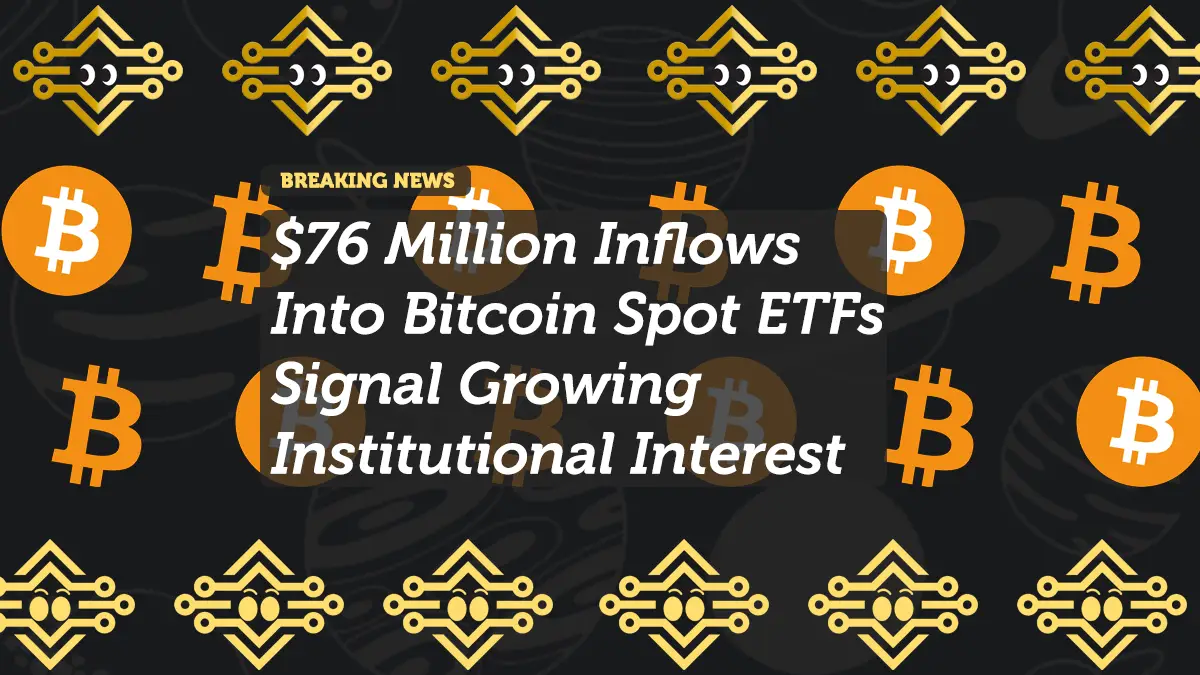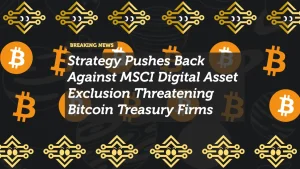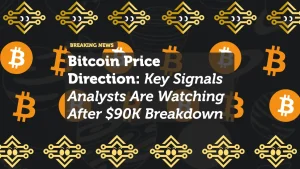
$76 Million Inflows Into Bitcoin Spot ETFs Signal Growing Institutional Interest
Despite recent market fluctuations, Bitcoin (BTC) has demonstrated its resilience, with $76 million flowing into Bitcoin Spot ETFs in the last 24 hours. This surge reflects institutional confidence in Bitcoin as a long-term asset, even amid short-term turbulence. With Bitcoin’s price recovering from recent lows, this development could signal stabilization and renewed investor trust in cryptocurrency.
Institutional Interest in Bitcoin Spot ETFs
1. Rising Inflows Despite Volatility
- Key Numbers: Bitcoin Spot ETFs saw $76 million in net inflows over 24 hours, showcasing steady institutional interest.
- Investor Behavior: Such inflows during a period of volatility indicate confidence in Bitcoin’s long-term potential rather than panic-driven sell-offs.
2. ETFs as a Gateway for Institutions
- Simplified Access: ETFs offer a regulated, accessible way for institutions to invest in Bitcoin without the complexities of holding and managing the underlying asset.
- Leading Players: Major players like BlackRock’s iShares Bitcoin ETF (IBIT) and Fidelity’s Wise Origin Bitcoin Fund (FBTC) have dominated the space, attracting significant investor interest.
Market Implications of ETF Inflows
1. A Stabilization Signal for Bitcoin
- Market Recovery: The consistent inflow into ETFs signals potential stabilization following Bitcoin’s recent price dip below $100,000.
- Positive Sentiment: Institutional buyers often take advantage of price dips, reinforcing the narrative of Bitcoin as a resilient asset.
2. Broader Confidence in Cryptocurrency
- Institutional Endorsement: Continued ETF inflows reflect growing acceptance of Bitcoin in mainstream finance.
- Ripple Effect: Institutional confidence often trickles down to retail investors, boosting overall market sentiment and liquidity.
Historical Context and Current Trends
1. Year-to-Date ETF Inflows
- Bitcoin Spot ETFs have attracted billions in cumulative inflows in 2025, a stark contrast to the market hesitancy seen during previous downturns.
- The recent $76 million inflow underscores a steady demand for Bitcoin despite macroeconomic uncertainties.
2. Historical Comparison
- Market Maturity: Compared to earlier cycles, Bitcoin’s growing ETF market highlights its increasing acceptance as a legitimate asset class.
- Regulatory Backdrop: The pro-crypto stance of the new U.S. administration under President Trump has likely contributed to market optimism and institutional confidence.
Factors Driving Institutional Interest
1. Regulatory Environment
- The crypto-friendly approach of the Trump administration and SEC leadership under Paul Atkins is fostering optimism for Bitcoin-related financial products.
- Proposed regulatory clarity could encourage further investment into Bitcoin ETFs and related products.
2. Market Resilience
- Bitcoin’s ability to recover quickly from price dips continues to attract institutional investors seeking high-reward opportunities.
- As Bitcoin surpasses $100,000, institutions are likely betting on its continued growth trajectory.
3. Broader Use Cases and Liquidity
- ETFs increase Bitcoin’s accessibility, allowing retail and institutional investors to participate without direct exposure to crypto wallets or exchanges.
- Increased liquidity from ETFs supports Bitcoin’s role as a hedge against inflation and economic uncertainty.
Future Outlook for Bitcoin Spot ETFs
1. New Financial Products
- Growing demand could pave the way for more Bitcoin ETFs, potentially expanding to include altcoins like Ethereum (ETH), Solana (SOL), or XRP.
2. Institutional Domination
- With BlackRock, Fidelity, and other financial giants leading ETF offerings, institutions will likely play a larger role in Bitcoin’s price stability and adoption.
3. Long-Term Implications
- Bitcoin Spot ETFs could serve as a gateway for broader crypto adoption by traditional investors, creating a ripple effect across the crypto ecosystem.
Challenges and Risks
1. Volatility
- The recent market rout that saw Bitcoin briefly dip below $100,000 underscores the inherent risks of crypto investments, even for ETFs.
2. Over-reliance on Institutional Players
- A heavy reliance on institutional inflows could centralize Bitcoin ownership, leading to potential market manipulation concerns.
3. Regulatory Uncertainty
- While the current administration appears pro-crypto, regulatory surprises or delays could impact the market trajectory.
Conclusion: A Vote of Confidence for Bitcoin’s Future
The $76 million inflow into Bitcoin Spot ETFs reflects a robust vote of confidence from institutional investors despite recent volatility. This trend underscores Bitcoin’s evolution from a speculative asset to a key component of diversified investment portfolios. As regulatory clarity improves and institutional interest deepens, Bitcoin’s position as a cornerstone of the digital asset market appears increasingly secure.
For investors, the current ETF inflows represent a potential stabilization point, but as always in crypto, caution is warranted amidst the market’s inherent volatility.
















